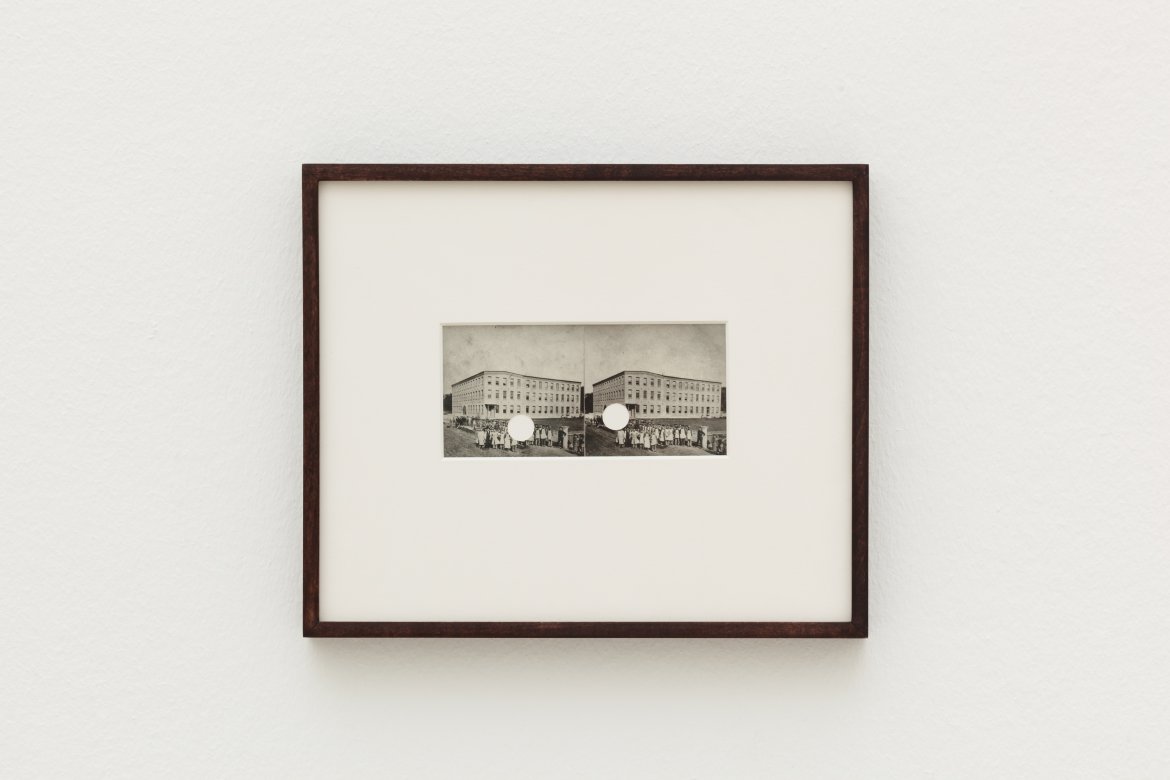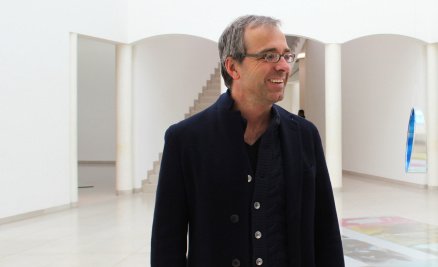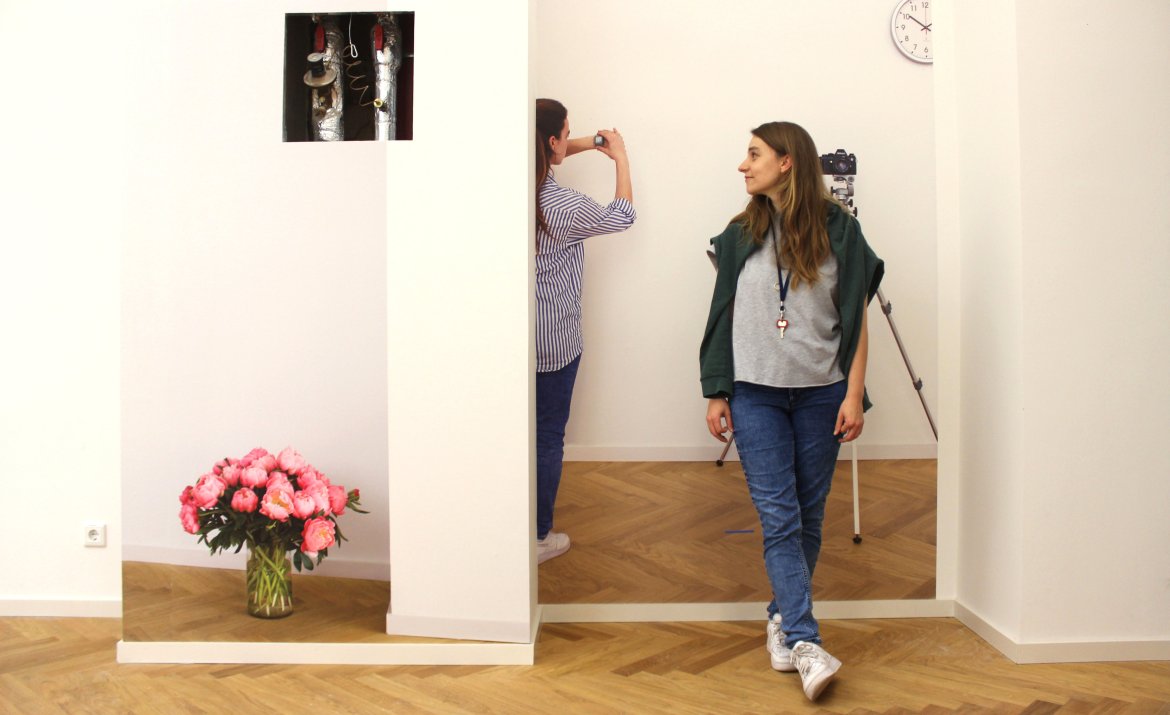Artist Interviews
RAY 2015 - IMAGINE REALITY Interview with Simon Starling
“For me photography was the beginning of everything.” (Simon Starling)
In the context of the Photography Triennial RAY Fotografieprojekte Frankfurt/RheinMain we interview artists who are represented in the main exhibition IMAGINE REALITY.
We are delighted that we have had the chance to do an interview with the artist Simon Starling. His work “The Nanjing Particles (After Henry Ward, View of C.T. Sampson’s Shoe Manufactory, with the Chinese Shoemakers in Working Costume, North Adams and Vicinity, circa 1875)“ (2008), which is shown in the central hall of the MMK 1, stands exemplary of transmedia work. The work consists of a photographic original as well as two large sculptural objects.

RAY:
Can you tell us something about the process and the formation of the steel objects which will be shown in the exhibition “Imagine Reality”? What is the political background?
Starling:
IIn 2007 I was invited to make an exhibition at MASS MoCA (Massachusetts Museum of Contemporary Art) in North Adams. The town was for a long time a hive of industry. But the lingering effects of the Great Depression in the 20’s and 30’s forced many companies to close and the town became very run down.. Then in the 1990’s, in one vast vacant, MASS MoCA opened – the museum is housed in a really beautiful former textile printing company – and I created a new work especially for the museum entitled “The Nanjing Particles” which opened in December 2008.
The exhibition took place at a time where everybody in America was talking about the rise and rise of China as a major global economic power. One person I was working with told me an anecdote about some Chinese workers having come to North Adams at a certain point to build a railway tunnel, but I later discovered that they had worked in a shoe factory which was just across the street. I started to investigate the story, and it turned out that they had been the first group of migrant workers on the east coast of America. They arrived in the 1870’s and were used to break a strike at the Samson shoe factory. They were scab labourers and were forced to live in the factory itself. I think life must have been pretty appalling for them. But as the first group of China immigrants to the East Coast they became celebrities and were photographed.
In the late 19th century it was very popular to buy stereo images that were originally meant to be viewed using a stereoscope, an optical device which produced the illusion of a single 3D picture. I found one of these stereo images showing a group of Chinese labourers in working clothes posing in front of the Sampson Shoe Company (the factory that once was located across the street from what is now the MASS MoCA building).
I extracted some silver particles from the prints’ emulsion and viewed them under an electronic microscope. Each of the particles that constitute the image have three-dimensional, sculptural characteristics. We identified two particles and made images of these particles from many different perspectives, so we were able to build a three-dimensional model of them using software developed at Albany University. These models were then sent to an art foundry in Nanjing, China who blew them up to one million times their original size and then forged them in stainless steel.The production of these sculptures could not be completed in the US due to financial constraints,
So it’s very much a work about the evolution of systems of global production.
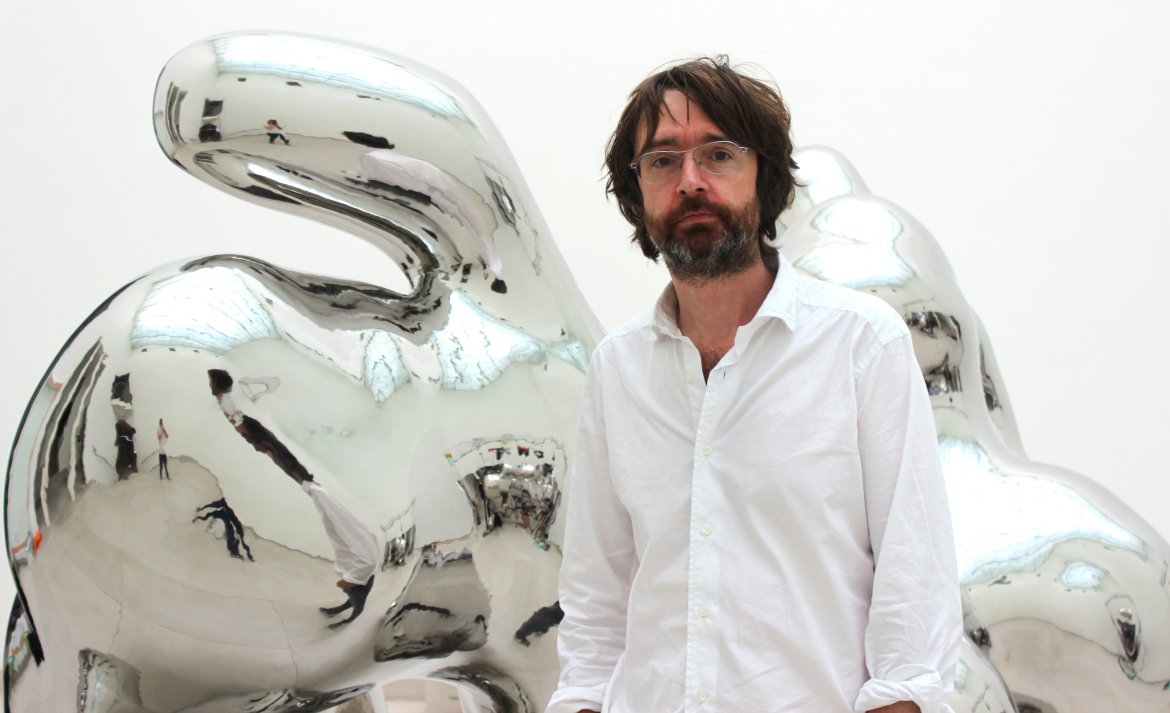
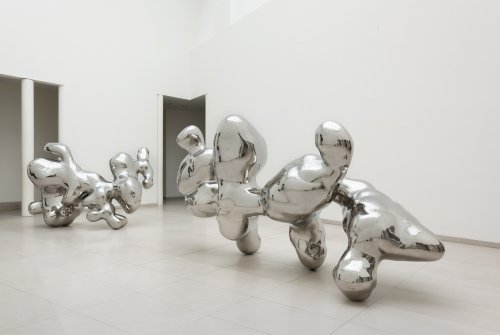
RAY:
At this point we can see that the story comes full circle, a circle of historical and contemporary production conditions. How are the sculptures and the photograph arranged at the exhibition, are they connected?
Starling:
The steel sculptures became a distorting mirror for the space around them. In the exhibition room of MASS MoCA the sculptures seemed to fuse with the industrial architecture around them – they appear almost virtual due to their highly polished seamless finish Here in the postmodern architecture of the MMK, they do something very different of course.
The steel sculptures are position in this very impressive entrance space at the heart of Hollein’s museum building and the tiny stereo image is presented in front of them – there’s a certain drama of scale, from the minute images of the workers in the photograph to the hugely enlarged image fragments to the architecture and so on. The work focuses on the processes of transformation involved in its making, from the high-tech laboratory context to the ancient art of forging.
RAY:
What significance or meaning does the medium “photography” have in your practice?
Starling:
The medium “photography” has many aspects. For me photography was in a way the beginning of everything. My relationship with it started at a rather young age when I built my little home-darkroom. It was very basic, very cold in winter, very hot in summer but I became captivated by the apparent alchemy of photography – before I understood the chemistry
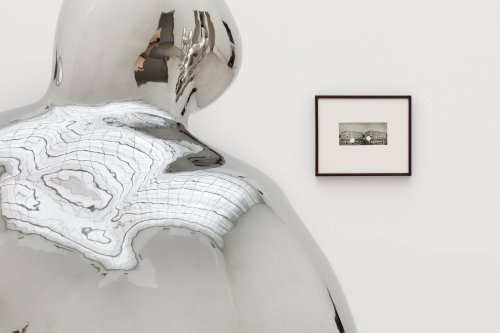
Later, I studied photography and then went on to art school to study fine arts. Photography remains a very important tool and interest in my practice and functions in many ways. Importantly it’s a material like any other material – in an sculptural way. It exists (or existed) as a deposit of matter –silver particles clustered to form images as is made explicit in the Nanjing Particles. The move to digital technology in image making has somehow provided some space for the re-appropriation of tradition analogue photography as a sculptural medium.
It also functions as a way of documenting the process, which is something I’m very busy with. A lot of the works that I make involve long and complex production processes. The medium “photography” is a way to document that and to keep those processes ‘live’ for an audience. This has be done with both still and moving images throughout my career.
Photography is a key to everything I guess. But I think of myself more as a sculptor who uses photography.
RAY:
Do you still work in a darkroom? What standing does analogue photography have for you today?
Starling:
Yes, I still have a darkroom in my studio. It’s a place for me to get away from the computer which increasingly dominates my working life. When you shut the door and flick on the red safelight, you are really somewhere else. I think it’s a very valuable space – also just to think in. There is still a sort of magic in there for me. I increasingly find that there is this interesting flic-flack between analogue and digital information, between data and matter. The Nanjing Particles is a good example of this kind of hybrid practice.
RAY:
Dealing with the way of transmedia is an important aspect in the exhibition “Imagine Reality”. Regarding the title of the exhibition, can you tell me in what way your work “The Nanjing Particles” presents a part of an “imagined reality“? What does it mean for you to imagine a reality?
Starling:
I guess for me that question is related to the process of “unpacking” images and objects.
I am interested in both the idea that a photograph is invariable a symptom of the forces that brought it into being – the institutions that surround it, the economics that fuelled it’s making, etc. – but also that photography’s particularities – its conflation of chemistry and optics, its phantasmagorical relationship to history – can in some way transcend those institutional boundries, to be ‘itself’ in one way or another. It is perhaps between these two understandings of photography that the work imagines a reality?
© RAY 2015 Fotografieprojekte Frankfurt/RheinMain, www.ray2015.de, www.mmk-notes.com
